In the past few days, a video featuring Mehdi Khazali has been circulating on the internet. He is seen standing near the grave of a Baha'i in the religious minority’s cemetery in Tehran.
In the clip, Khazali claims that there are no restrictions on burying Baha'is in Golestan-e-Javid cemetery and accuses the community of “spreading falsehoods.”
Who Is Mehdi Khazali?
Mehdi Khazali is the son of Abulqasem Khazali, a member of the Assembly of Experts and the Guardian Council who formerly served as the representative of the Islamic Republic’s founding father, Rohullah Khomeini, in an anti-Baha’i association known as Hojjatiyeh.
Abulqasem Khazali actively participated in this association from 1980 until its dissolution ordered by Khomeini. He remained one of the few government officials who openly supported the goals of the group after its dissolution.
Mehdi Khazali is the director of Hayaan publications. He gained popularity with the 1997 publication of a book titled Identity, which was based on a TV program of the same name.
The program, produced by Saeed Emami and Hossein Shariatmadari, was aired in 1996.
During the program, notable writers such as Abdul Hossein Zarkoub, Ahmad Shamlou and Mahmoud Dolatabadi were unjustly labeled as "traitors to the nation."
It also showed the “confessions” of Saeedi Sirjani, a researcher, writer and political activist critical of the Islamic Republic, as well as prominent religious activist Ezzatullah Sahabi.
Khazali was detained multiple times since 2009, but he was always released after a short period of time. Seven years ago, he received a prison sentence he never served.
In the video mentioned above, he refers to an individual named Ershad, probably the person behind the camera, and claims: "For example, Mr. Ershad paid 120 million [toman] ($2,400) for the grave of one of his relatives.”
Who Is Ershad?
The person referred to as Ershad in the video is identified as Hasan Ershad. It is unclear whether this is a real name or a nickname.
Ershad first came to attention in the 2000s as an interrogator of a member of the Baha'i community in Kerman. A Baha'i youth was also arrested in Birjand after criticizing a speech by Ershad on a Telegram channel.
Ershad presents himself as a graduate of the Faculty of Jurisprudence and Religions who specializes in the Baha’i faith. Over the years, he has produced online videos under the pseudonym Naser al-Din, in which he attempts to justify and minimize the persecution of Baha'is in Iran.
Over the past two years, Ershad and Mehdi Khazali have collaborated on several video programs with an anti-Baha’i agenda. It is likely that the recently circulated video of Khazali is part of this series of programs.
How Was the Cemetery Given to Baha'is?
Soon after the Islamic Revolution’s victory in 1979, Baha'i cemeteries in various cities and villages were subjected to attacks by government forces, and were destroyed and seized by the government.
The Baha’i cemetery in Tehran, spanning an area of 83,000 square meters, was confiscated in 1982.
Subsequently, the government demolished the burial site of over 15,000 Baha'is and sold the gravestones. The corpses were exhumed and transported away in trucks. Finally, the land was leveled by a bulldozer before the Khavaran Cultural Center was constructed.
This cultural center currently stands on the grounds of the former Baha'i cemetery.
During the 1980s, the Khavaran cemetery became the resting place for hundreds of Baha'is, but no tombstone marked the graves. Some of those buried there had been executed.
In 1993, the government allocated a 20,000-square-meter plot of land near Khavaran cemetery to the Baha'i community. This plot is adjacent to the Armenian cemetery.
As a result, the government seized 83,000 square meters of land owned by Baha'is within the city and, 12 years later, provided them with only a quarter of that surface to bury their dead.
Due to the barren nature of this land, devoid of any facilities, the Baha'is of Tehran have independently financed the construction of a reception hall, restroom, refrigeration facilities and other amenities.
All matters related to burial of the deceased and tomb maintenance are the sole responsibility of the Baha'is.
Over the past 30 years, Behesht Zahra cemetery has not contributed any funds.
How Gravestones In the Baha'i Cemetery Are Arranged?
In the video, Mehdi Khazali is seen standing on top of a gravestone, claiming that the graves in Golestan-e-Javid and Behesht Zahra are all at the same level.
He asserts that due to the spacing between each grave, the graves in this cemetery are equivalent to three graves in Behesht Zahra cemetery.
It is evident from the images that Khazali is standing on top of one of the gravestones belonging to a deceased person in the Baha'i cemetery. It should be noted that for the past two years, Baha'is have been prohibited from having gravestones.
Additionally, Khazali is likely aware that this land was provided to the Tehran Baha'i community during the presidency of Akbar Hashemi Rafsanjani.
Initially, this land did not possess any specific facilities or distinguishing features, and it was the Baha'is who, at their own expense, transformed it into a burial ground for their deceased.
For the past three decades, the Tehran Baha'i cemetery has operated under the rules regulating religious minorities’ cemeteries, and Baha'is have not encountered any issues with the authorities of Behesht Zahra until this year.
Legislation allows members of each religious community in Tehran to bury their deceased in their respective cemeteries in accordance with their religious customs while adhering to hygiene principles. This applies to Hindus and Armenians as well.
The design of the Baha’i graves reflects the community’s belief in upholding the dignity and reverence of the deceased. It is a manifestation of their beliefs and values. Naturally, with the increase in the number of deceased Baha'is, alternative plans will be implemented in the future for their burials.
Khazali suggests that the Islamic government favors religious minorities like the Baha'is over Muslims. He attempts to draw a comparison between the size of the graves in Behesht Zahra and the Baha’i cemetery.
But Khazali fails to mention that agents had previously dug graves in Golestan-e-Javid. Their depth indicated that they were double-stacked graves. It appears that there may be an attempt to coerce Baha'is into using such graves.
How Baha'is Are Buried?
In the video, Khazali asserts that individuals can secure a burial spot in Golestan-e-Javid by paying 14 million tomans ($280).
He also suggests that those who lack the financial means can still be buried in a designated area “behind a wall in the cemetery without any charges.”
However, it is important to note that even in Behesht Zahra, individuals who are unable to afford a grave can still be laid to rest in a specific area located at the end of the cemetery, free of charge.
Where Are Needy Baha’is Buried?
According to the Baha’i community, every deceased individual, regardless of their family's financial situation, is considered equal and not labeled as indigent.
In the case where a family cannot afford funeral expenses, the Baha'is of Tehran bear the costs associated with the burial.
Since the establishment of the Baha'i cemetery, all deceased Baha'is have been buried in chronological order based on the date of their death, without any differentiation or distinction.
They share the same type of tombstones, and the families refrain from placing flowers or decorations on their loved ones' graves.
Therefore, Khazali's assertion that needy Baha'is are buried elsewhere is untrue.
Where Is the Place Mentioned by Khazali?
Mehdi Khazali's claim that needy Baha'is are buried behind the wall refers to the location of mass graves where individuals executed in the 1980s were buried. This area, known as Khavaran cemetery, served as the burial site for deceased Baha'is for over a decade before the land was taken over.
It appears that Khazali intentionally omitted to mention Khavaran cemetery, where hundreds of Baha'is were laid to rest during the 1980s. Thus, his assertion that only impoverished Baha'is are buried there is entirely false.
What Does Khazali Mean by Needy Baha'is?
Over the past three decades, Baha'i families have borne all the expenses related to the death of their loved ones, including transportation and mortuary costs.
Despite the fact that the land has been allocated to the Baha'is, they have had to make multiple payments for its use. Last year, each Baha'i family paid 13 million tomans ($260) to Behesht Zahra to have their loved one's bodies transferred from the morgue.
Since March, an individual named Masoud Momeni, who claims to have been appointed by Behesht Zahra as director of the Baha'i cemetery, has demanded 30 million tomans ($600) to release the bodies from the morgue.
Several Baha'i families have refused to pay because the request lacks legal documentation and no such demand has been made to other religious minorities who have cemeteries near the Baha'i cemetery.
In the past three months, Momeni and the agents of Behesht Zahra have buried the bodies of these families' relatives in the mass grave site without any religious ceremonies.
Therefore, the impoverished Baha'is mentioned by Khazali are those whose families declined to pay the 30 million tomans and were consequently buried by him either in Khavaran cemetery or, as Mehdi Khazali suggests, behind the wall.
In recent days, Momeni has lowered the price to pay from 30 million tomans to 14 million tomans ($280). According to one Baha'i, he has also requested an additional eight million tomans ($160) for the coffin.
The Process of Burying Baha'is in the Cemetery
Mehdi Khazali claims that after the payment of 14 million tomans, anyone can easily be buried in Golestan-e-Javid.
However, he deliberately omits the fact that since the beginning of the Persian New Year in March, Momeni and other agents are stationed at the Baha'i cemetery with the authority to prevent Baha'is from accessing the cemetery.
In another video showing Khazali conversing with Momeni, the two are seated in a room that was originally designated by the Baha'is for cemetery-related activities. But Momeni has taken control of this room since the beginning of the new year.
Khazali fails to mention the prohibition imposed on Baha'i families from visiting the sacred grounds where their loved ones have been laid to rest.
These are the individuals he refers to as "poor."
Agents have recently set fire to several hundred bushes at the entrance of the cemetery to hinder mourning families from entering the premises.
This article has been written based on interviews with local informed sources.
visit the accountability section
In this section of Iran Wire, you can contact the officials and launch your campaign for various problems








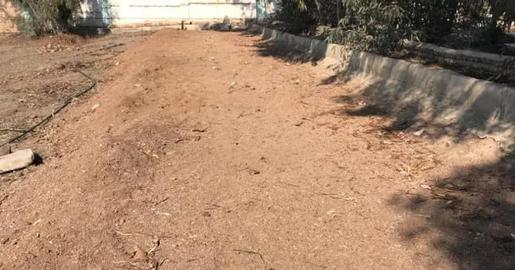
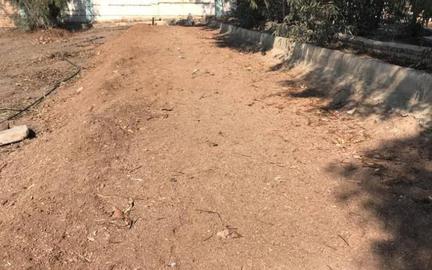

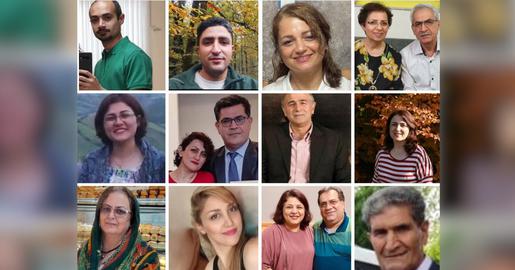
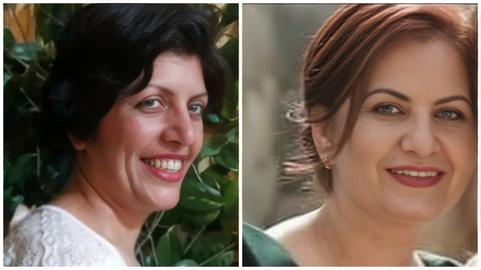

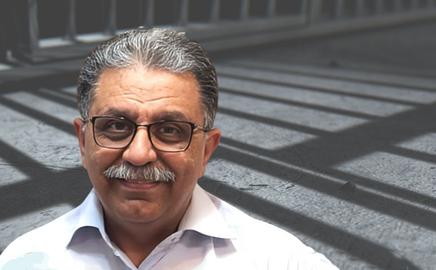
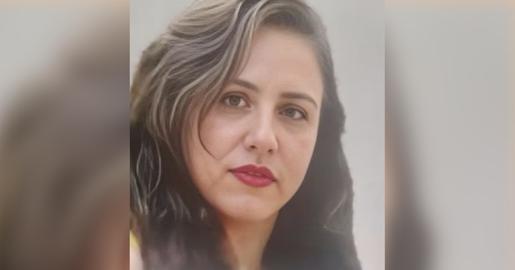
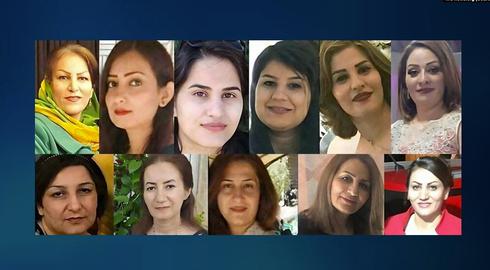
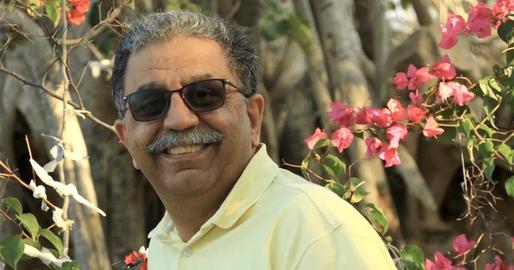



comments